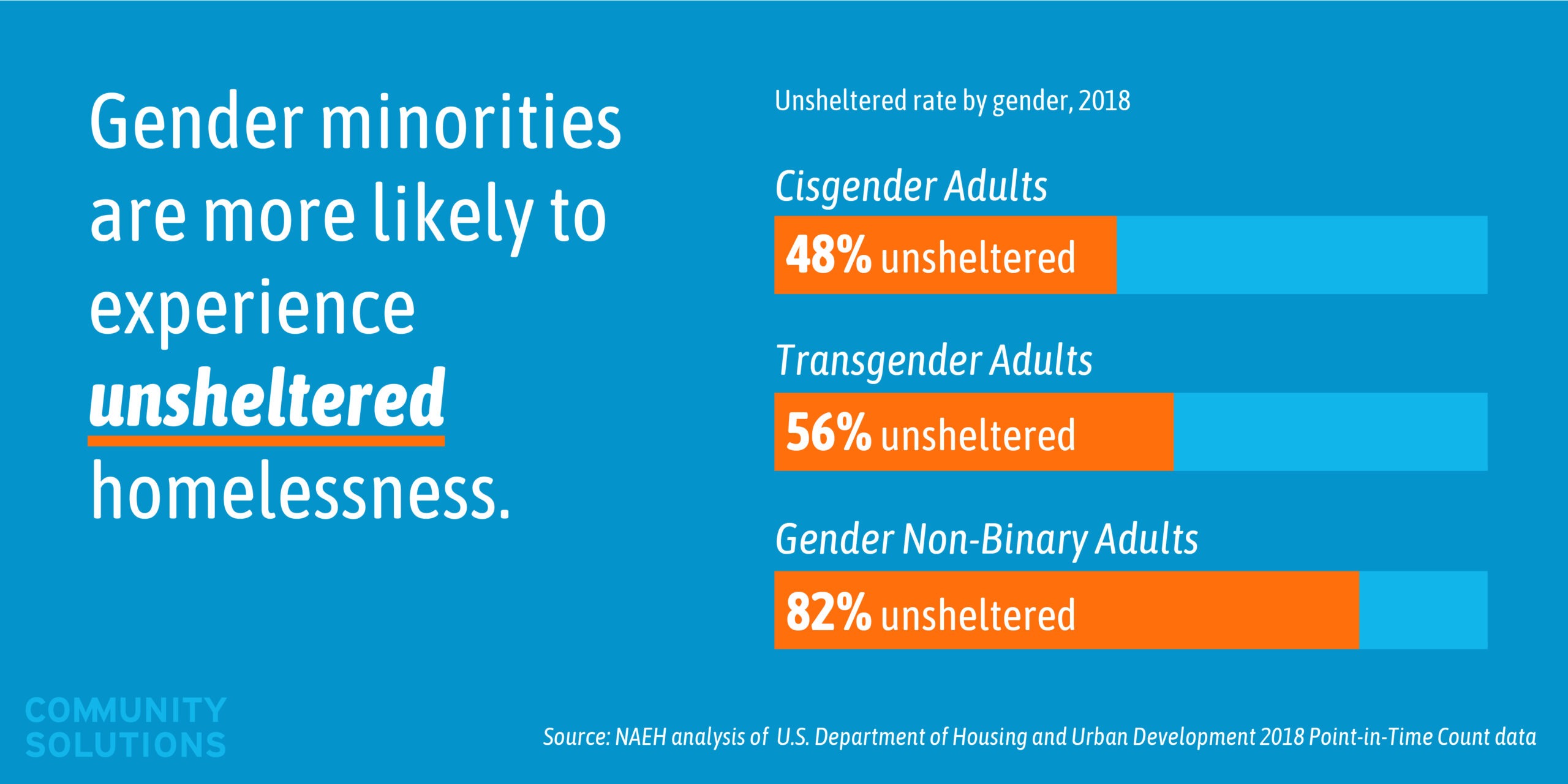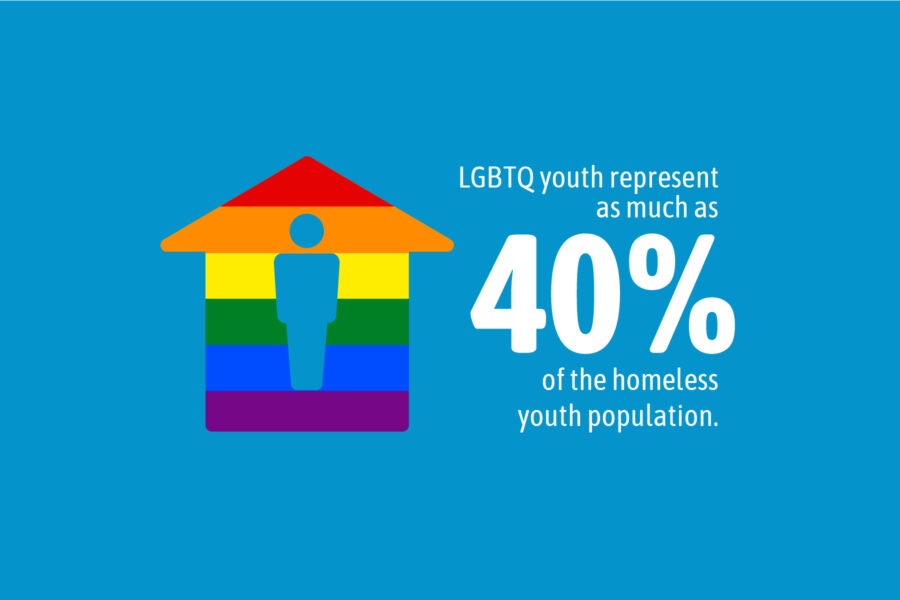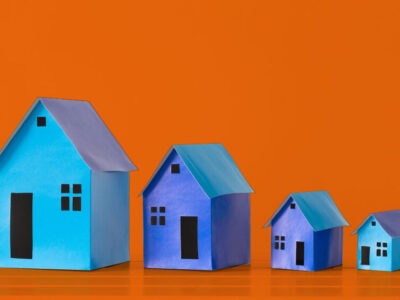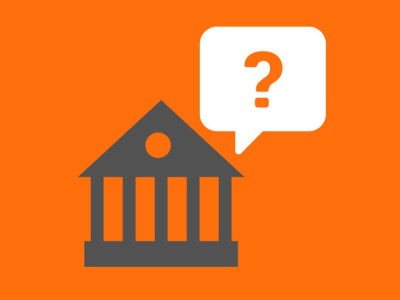The LGBTQ community has experienced a monumental expansion of rights and equality over the past decade, including marriage equality and protection from employment discrimination, a decision made by the Supreme Court this month.
Despite these gains, LGBTQ people continue to experience higher rates of homelessness and housing instability than their straight counterparts. And this disparity is compounded when they are also Black or brown.
While all LGBTQ people experience homelessness at higher rates than the general population, two specific groups are of particular concern: LGBTQ youth and transgender adults.
LGBTQ Youth Homelessness
LGBTQ youth are over-represented in the homeless population. According to Chapin Hall’s Voices of Youth Count, an average of 20% of young adults (ages 18-25) experiencing homelessness in the United States identify as LGBTQ. In some communities, LGBTQ young adults make up 40% of their youth homelessness population. Further, LGBTQ young people are over twice as likely to report experiences of homelessness than non-LGBTQ youth.
In addition to facing higher risks of homelessness, LGBTQ youth report higher exposure to trauma than their non-LGBTQ peers. This trauma includes higher incidences of physical harm, discrimination and stigma, and exchanging sex for basic needs.
And again, the racial disparities are apparent as LGBTQ youth of color have disproportionately high rates of homelessness. Specifically, Chapin Hall found that youth who are Black and LGBTQ reported the highest rates of homelessness overall.
The most common reason for LGBTQ youth homelessness is due to family conflict. Most LGBTQ youth cite being forced out or running away due to rejection and unsupportive family members leading to their homelessness. However, this family conflict in large part is due to family instability and frayed relationships over time rather than in the immediate aftermath of “coming out.”
However, while rejection is the most frequently cited reason LGBTQ youth experience homelessness, aging out of the foster care system, poverty, and mental health issues were also reasons given. And often it is a combination of factors that contribute to youth homelessness.
Homelessness has many short-term and long-term detrimental consequences for youth, such as increased rates of incarceration, decreased mental and physical health outcomes, increased rates of substance abuse, and early death. LGBTQ youth also face stigma, rejection, and a lack of social support. However, despite serious adversity, LGBTQ youth are remarkably resilient. With access to safe and affirming responses and services to address their specific needs, LGBTQ youth can overcome their hardships and realize their potential.

Transgender Adult Homelessness
Transgender adults experience higher rates of homelessness than cis-gender adults. According to the National Center for Transgender Equality, one in five transgender individuals experience homelessness at some point in their lives. Further, transgender and gender non-binary adults experience higher rates of unsheltered homelessness than their cis-gender counterparts.
In addition to addressing the factors that lead to homelessness, ensuring trans* and gender non-conforming individuals have access to adequate and safe shelter options is paramount — and it is being threatened by the Department of Housing and Urban Development’s (HUD). Last year, HUD proposed changes to its Equal Access Rule that would severely limit trans* and gender non-conforming adults and youth accessing safe shelter options. More specifically, it would allow shelters and housing providers to, “consider an individual’s sex for the purposes of determining accommodation within such shelters and for purposes of determining sex for admission to any facility or portion thereof.”
The Equal Access Rule was originally implemented in 2012, requiring “equal access to HUD programs without regard to a person’s actual or perceived sexual orientation, gender identity, or marital status.” To date, all housing providers that receive HUD funding or HUD-backed loans were required to follow this guidance. This rule was updated in 2016 to make clear that these shelters and housing providers must abide by a person’s expressed gender identity. However, the current administration is trying to weaken these protections, allowing shelters to discriminate against trans* people in need.
The Report of the 2015 U.S. Transgender Survey by the National Center on Transgender Equity found that nearly one-third (30%) of respondents had experienced homelessness at some point in their lives. Further, more than one-quarter (26%) of those who experienced homelessness in the past year avoided staying in a shelter because they feared being mistreated as a transgender person. Of those who did stay in a shelter, 70% of trans* and gender non-conforming people reported some form of mistreatment, including being harassed, sexually or physically assaulted, or kicked out because of their gender identity.
Trans* and gender non-conforming adults cite similar factors leading to homelessness as LGBTQ youth: family rejection, stigma, mental health issues, substance abuse, as well as barriers to employment opportunities and housing. Despite a greater need, there are many barriers when trans* and gender non-conforming people attempt to access housing and shelters.
Housing Saves Lives
On July 1, 2020, HUD formally announced its proposed modifications to the Equal Access Rule. On July 21, the proposed language was listed in the federal register and the public has 60 days (until September 22, 2020) to submit their comments.
Community Solutions, along with our coalition partners, are responding to the proposed change to ensure all people have safe housing options available to them. We will be submitting comments as well in opposition to this change.
If you or your organization would like more information or wants to get involved, please visit Housing Saves Lives to learn more about this campaign.





